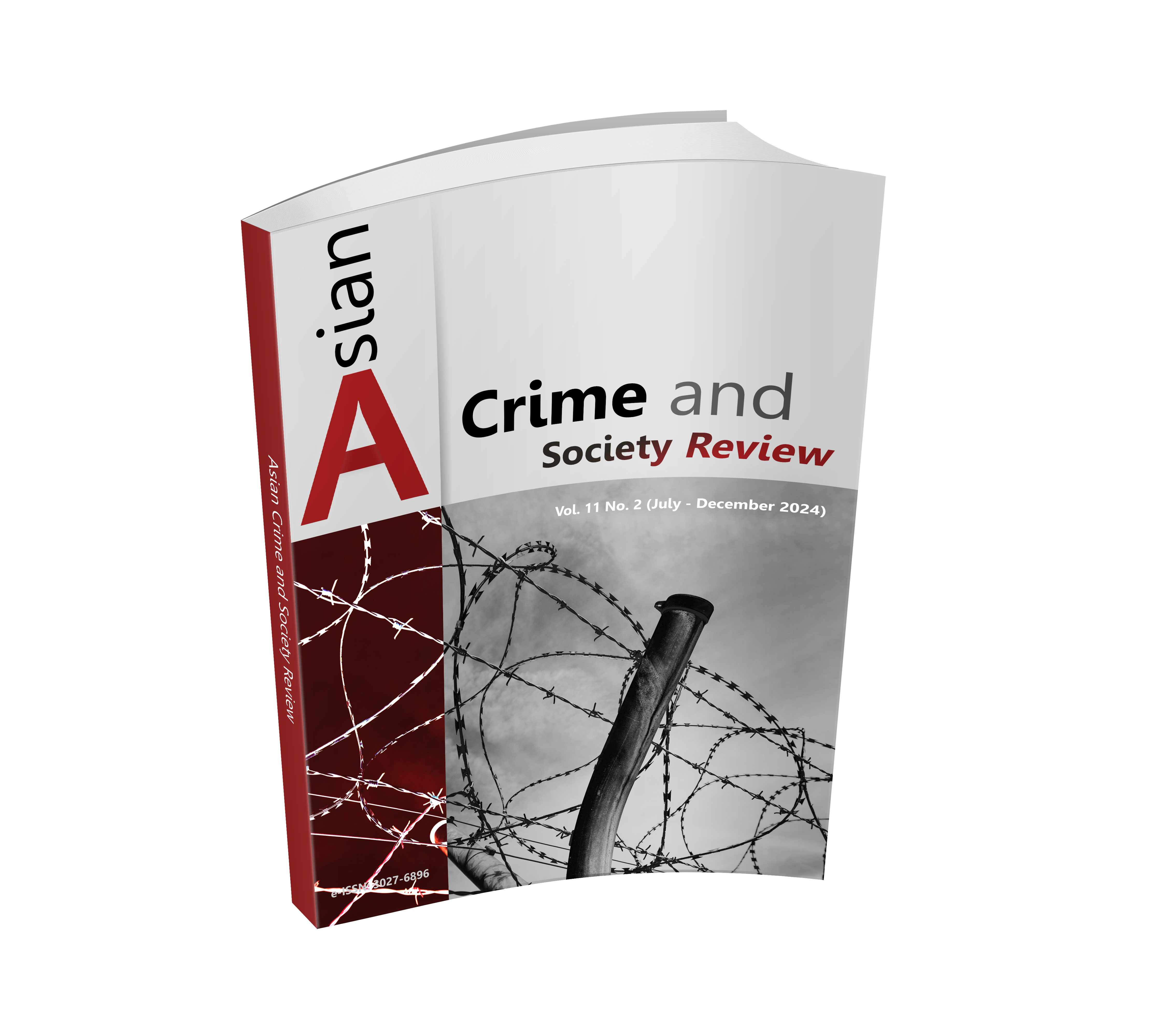RESEARCH PROJECT MANAGEMENT OF THAILAND’S SOUTHERN BORDER PROVINCES DEVELOPMENT FOR SUCCESSFUL ACHIEVEMENT
DOI:
https://doi.org/10.14456/acsr.2024.14Keywords:
Research Project, Social Return of Investment, Thailand’s Southern Border ProvincesAbstract
The follow-up and evaluation of the research project management through all 11 projects in the fiscal year 2020 received the budgets from the National Research of Thailand through the observation tool and data analysis by content synthesis and Social Return of Investment analysis, which gives the result that every project pursued the activity plan despite the COVID-19 pandemic by organizing the focus group via the online system and in-depth interviews. The research results appeared beneficial toward the target groups, divided into four groups: 1) social and cultural group, 2) commercial group, 3) technological group, and 4) policy group. The evaluation result indicates that the social return on investment result reveals that the project focuses on the low-income group according to the Islamic Principle. The current total value is 8,500,000 THB., with the result of investment value as 1,429,906.54 THB. Every THB. invested in this project could create a social benefit at 1.79 THB. Most of the projects could fully deliver the results to the beneficiary.
Downloads
References
Archawananthakun, S., & Yaemlaoar, P. (2014). Guide to Social Results and Returns Social Investment. Bangkok: Dan Suthat Printing.
Blumenstock, J., Cadamuro, G., & On, R. (2015). Predicting poverty and wealth from mobile phone metadata. Science, 350(6264), 1073-1077.
Breznik, L., & Hisrich, R. (2014). Dynamic capabilities vs. innovation capability: are they related?. Journal of Small Business and Enterprise Development, 21(3), 368-384.
Clark, C., Rosenzweig, W., Long, D., & Olsen, S. (2003). Double Bottom Line Project Report: Assessing Social Impact in Double Bottom Line Ventures. New York: The Rockefeller Foundation.
Deming, W. (2004). Out of the Crisis. Massachusetts: Massachusetts Institute of Technology.
Dhammacitto, P. (2006). Buddhism Management Method. Phra Nakhon Si Ayutthaya: Mahachulalongkornrajavidyalaya Printing Press.
Grameen Danone Foods. (2016). Social Business Solution. Retrieved from www.grameencreativelab.com/live-examples/grameen-danonefoods-ltd.html.
Jarudamrongsak, K. (2017). Evaluation of Sustainability of Community Enterprise: A Case Study of Baan Lang Pattana Agriculturist's Housewives Group. Master of Science Thesis, National Institute of Development Administration.
Kingfisher Polymers. (n.d.). Introduction to Kingfisher Polymers. Retrieved from http://kingfisherpolymers.strikingly.com/#about-us.
Mohd, M., Salleh, B., & Zakaria, L. (2013). Identification and Molecular Characterizations of Neoscytalidium dimidiatum Causing Stem Canker of Red-fleshed Dragon Fruit (Hylocereus polyrhizus) in Malaysia. Journal of Phytopathology, 161(11-12), 841-849.
Olsen, S., & Nicholls, J. (2005). A framework for approaches to SROI analysis. Retrieved from https://ccednet-rcdec.ca/sites/ccednet-rcdec.ca/wp-content/uploads/2022/09/2005-050624_SROI_Framework.pdf.
Organisation for Economic Co-operation and Development. (2020). Youth and COVID-19 Response, Recovery and Resilience. Retrieved from https://read.oecd-ilibrary.org/view/?ref=134_134356-ud5kox3g26&title=Youth-and-COVID-19-Response-Recovery-and-Resilience.
Pattanarangsan, R. (1999). Communication and Human Relations. Bangkok: Chandrakasem Rajabhat University.
Pongpaiboon, N., & Phoochinda, W. (2019). Social Return on Investment of Organic Agriculture in Sampran Model Project. Silpakorn University Journal, 39(4), 137-154.
Ratzan, S. (1998). Health Communication Goals. A paper presented at the WHO European Health Communication Network Consultation on Health and Environment Communication Policy, Moscow, Russia.
Ritcharoon, P. (2014). Concept and Process of Project Evaluation. STOU Education Journal, 7(1), 1-12.
Saraket, B. (2012). The Guidelines of System and Mechanism Development for Research Management of Rajabhat Universities. Master of Science Thesis, National Institute of Development Administration.
Schartinger, D. (2018). Social innovation with environmental impact: Current and future challenges. In J. Howaldt, C. Kaletka, A. Schröder, & M. Zirngiebl. (eds.). Atlas of Social Innovation: New Practices for a Better Future (pp. 176-178). Seibersdorf: AIT Austrian Institute of Technology.
Serirat, S. (2002). Organization and Management. Bangkok: Dhammasarn Printing House.
Sony, A., & Ferguson, D. (2017). Unlocking consumers’ environmental value orientations and green lifestyle behaviors: A key for developing green offerings in Thailand. Asia-Pacific Journal of Business Administration, 9(1), 37-53.
SROI Network. (2012). A guide to Social Return on Investment. London: SROI Network.
Thammaviteekul, A. (2021). Model of Data Collection on Self-Evaluation according to Non-Formal and In-Formal Education Standard for Fiscal Year 2020. Retrieved from https://panchalee.wordpress.com/.

Downloads
Published
How to Cite
Issue
Section
License
Copyright (c) 2024 Authors

This work is licensed under a Creative Commons Attribution-NonCommercial-NoDerivatives 4.0 International License.










.png)


